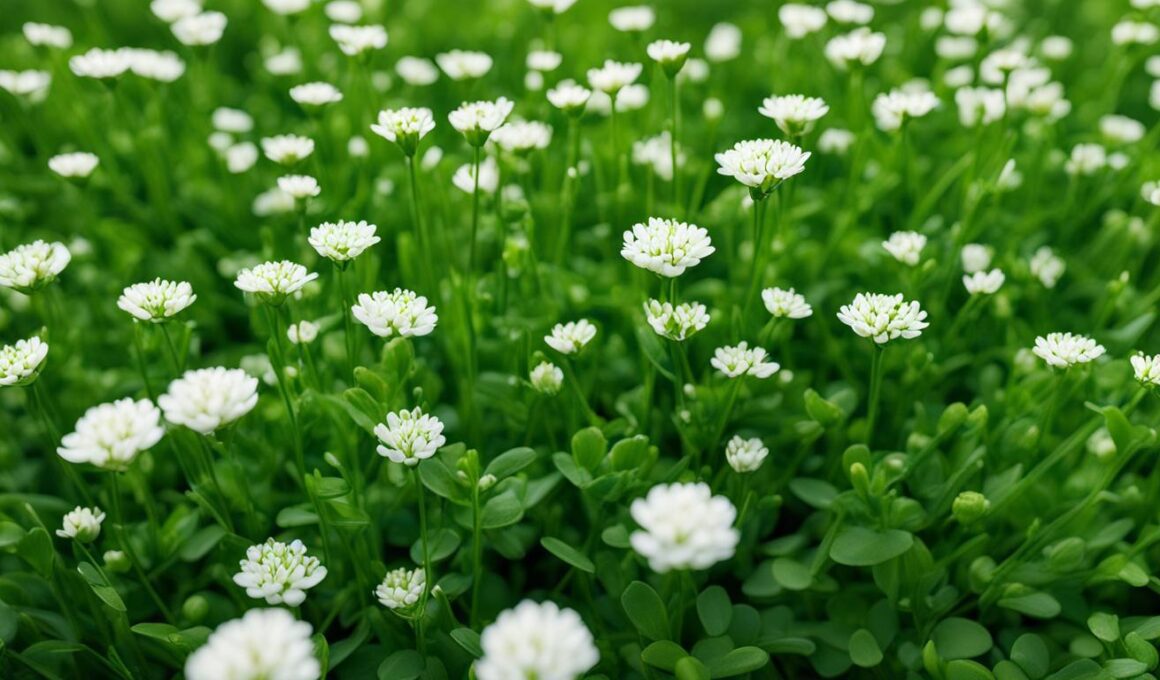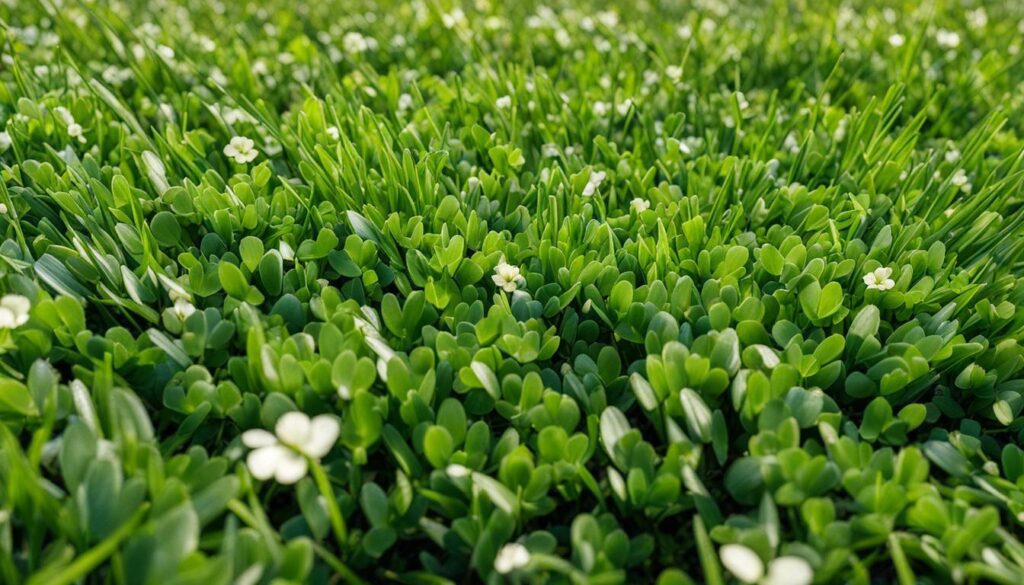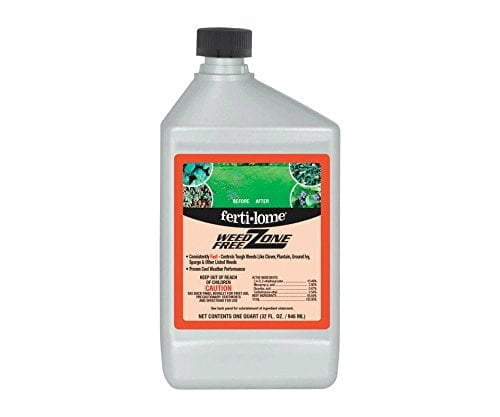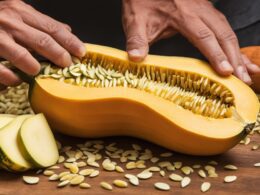If you’re considering a more eco-friendly choice for your lawn, microclover might be just what you’re looking for. This special variety of small white clover can be used as a supplement for your turfgrass or even as an alternative to a traditional grass lawn. But before you make a decision, it’s important to weigh the pros and cons.
What is Microclover?
Microclover is a low-growing, dwarf variety of the common white Dutch clover. It serves as a great alternative to traditional grass lawns and can also be used as a supplement for turfgrass. Unlike regular clover, microclover has a unique growth pattern. It grows close to the ground, has smaller leaves, produces fewer flowers, and does not form clumps. These characteristics make microclover a tidy and attractive option for homeowners seeking a low-maintenance and eco-friendly groundcover for their lawns.
Popular varieties of microclover include “Pirouette” and “Pipolina,” which reach a height of 4-6 inches and tolerate close mowings better than other clover varieties. This low-growing nature of microclover not only adds visual appeal to your yard but also reduces the need for frequent mowing and maintenance.
Benefits of Microclover Lawns
Microclover lawns offer a multitude of microclover lawn benefits that make them an ideal choice for homeowners looking for an eco-friendly lawn that requires low maintenance.
- Reduces erosion and stabilizes the soil.
- Crowds out common weeds, reducing the need for herbicides.
- Fixes atmospheric nitrogen, naturally fertilizing other plants.
- Creates nutrient-rich green manure, improving soil health.
- Reduces lawn maintenance, saving you time and effort.
- Cuts down on energy use from lawn mowing.
- Conserves water by requiring less irrigation.
- Saves money by reducing the need for fertilizers and pesticides.
- Decreases the need to aerate and dethatch your lawn.
- Attracts beautiful pollinators like bees and butterflies.
- Discourages grass fungus and diseases.
- Resists common lawn pests such as grubs.
- Hardy in cold weather, maintaining its appearance throughout the year.
- Grows well in compacted soil, making it ideal for challenging areas.
- Provides a food source for rabbits, increasing biodiversity in the yard.
With all these microclover lawn benefits, it’s clear why microclover lawns are gaining popularity among homeowners seeking an eco-friendly and low maintenance alternative to traditional grass lawns.
Special Benefits of Microclover
In addition to the general benefits of clover, microclover has some unique advantages. It grows well with turfgrasses, making it an excellent addition to lawns with tall fescue, fine fescue, Kentucky bluegrass, and perennial ryegrass. Unlike white clover, which can be aggressive and clump, microclover is less aggressive, grows lower to the ground, and does not form as many clumps. This allows it to integrate nicely with other grasses and create a more uniform appearance. Microclover also looks tidier than regular clover, with smaller leaves that can be mowed more closely without damage, resulting in a neat and attractive lawn.
If you’re aiming for a tidy lawn appearance, microclover is an excellent choice. It blends seamlessly with turfgrasses, enhancing the overall appearance of your yard. Its low-growing nature and the absence of clumping make your lawn look well-maintained and visually appealing. When mowing, you can cut your lawn closer without causing damage to the microclover, resulting in a neater and more manicured look. Say goodbye to the uneven patches and untidy edges often associated with traditional clover.
Drawbacks of Microclover Lawns
While microclover offers a range of benefits, it’s important to consider the drawbacks before deciding if it’s the right choice for your lawn. One drawback is its limited tolerance to drought and heat compared to white clover. Microclover may struggle to survive during hot, dry periods, making it susceptible to dying off.
Microclover also has a lower tolerance for shade compared to white clover. It requires at least four hours of full sun per day to thrive. If your yard has heavily shaded areas, microclover may not be the best option for those specific spots.
Another potential drawback of microclover is the cost of planting. The seeds can be more expensive compared to other types of grass. However, investing in microclover can have long-term benefits for your lawn, so it’s worth considering if the cost aligns with your budget.
Lastly, microclover is less resilient to heavy foot traffic. If you have areas in your yard that receive frequent use or play, microclover may not withstand the wear and tear as well as other grass varieties.
Despite these drawbacks, microclover can still be a viable option for many homeowners who prioritize its eco-friendly nature and other advantages. It’s important to assess your specific lawn conditions and needs before deciding if a microclover lawn is right for you.
Establishing and Maintaining a Microclover Lawn
Creating a beautiful microclover lawn requires proper establishment and regular maintenance. Follow these steps to ensure your microclover lawn thrives:
- Till the soil: Begin by tilling the soil to create a loose and well-draining surface for the microclover seeds.
- Add compost: Boost fertility by adding compost to the soil. This will provide essential nutrients for the microclover to grow.
- Adjust pH levels: Test the soil pH and adjust it, if necessary, using lime. Microclover prefers a slightly acidic soil pH level.
- Spread seeds evenly: Use a seed spreader to distribute the microclover seeds evenly across the yard. This ensures uniform coverage and growth.
- Lightly water the seeds: After seeding, lightly water the area to keep the soil moist. This encourages germination and helps the seeds establish.
- Germination period: Microclover typically germinates within 7-14 days. Be patient and provide consistent moisture during this period.
- Watering: Once the microclover is established, it only needs to be watered one to two times a week. Avoid overwatering to prevent waterlogged soil.
- Mowing: Regular mowing is necessary to keep your microclover lawn neat and prevent it from growing too tall. Be careful not to scalp the turfgrass when mowing.
- Reseeding: Microclover is a perennial, but you may need to reseed every two to three years to maintain a full and healthy lawn.
- Avoid herbicides: Avoid using herbicides on your microclover lawn as they can harm the clover. Embrace natural weed control methods instead.
- Avoid sandy soil: Microclover prefers well-draining soil. If your soil is sandy, consider amending it with organic matter to improve its structure.
With proper care and maintenance, your microclover lawn will provide you with a lush, eco-friendly, and low-maintenance alternative to traditional grass lawns.
What are the Pros and Cons of Using Hydro Seeding Grass for Lawn?
Hydro seeding grass for lawn offers efficient and quick growth, making it ideal for creating lush lawns made easy. However, it can be more costly than traditional seeding methods. Additionally, hydro seeding requires specific equipment and expertise, and the seeds are more vulnerable to wash away before the grass establishes.
Final Thoughts on Microclover Lawns: An Eco-Friendly Alternative
Microclover lawns offer an array of benefits that make them an enticing eco-friendly alternative to traditional grass lawns. By choosing a microclover lawn, you can contribute to reducing erosion, conserving water, attracting pollinators, and minimizing the need for lawn maintenance chemicals. These benefits can not only improve the health and appearance of your yard but also create a more sustainable and environmentally friendly outdoor space.
While microclover lawns have their advantages, it’s important to consider a few drawbacks. They may not tolerate prolonged drought or shade as well as other types of clover, which could affect their overall resilience. Additionally, establishing a microclover lawn might require a slightly larger investment compared to other grass options. Evaluating these factors against the specific needs and conditions of your yard will help you determine if a microclover lawn is the right choice for you.
Despite these considerations, microclover lawns provide a low-maintenance and eco-friendly solution for homeowners seeking a visually appealing and sustainable lawn alternative. By selecting microclover, you can support a healthier ecosystem while enjoying the benefits of reduced maintenance and cost savings over time. Take the time to weigh the pros and cons, and make an informed decision about whether a microclover lawn aligns with your sustainability goals and landscaping preferences.











